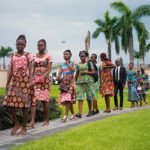I recently read a small book entitled “Let’s Talk about Misconceptions with DNA and the Book of Mormon.” I’m writing to commend it to anybody who might be interested in the subject—or worried by it.
For the past generation or so, many critics of Joseph Smith, the Book of Mormon, and the Church of Jesus Christ of Latter-day Saints have confidently declared that the relatively new science of genetics, the study of DNA, conclusively demonstrates the Book of Mormon to be historically false. There is, they say, no evidence of “Israelite DNA” among ancient Americans. On the opposite side, some Latter-day Saints seem to think that the Book of Mormon has been essentially proven correct by DNA research.
The authors of this book reject both positions as simplistic and uninformed. But who are they? And why should their opinion carry any particular authority? Both are believing Latter-day Saints and both are academically-trained, professional genetic scientists.
John M. Butler, who earned his doctorate at the University of Virginia, conducts forensic science research at the U.S. National Institute of Standards and Technology near Washington, DC. In addition to publishing more than two hundred scientific articles and book chapters, he has written six textbooks on the use of DNA in criminal and other legal cases. In 2023, he was named the most highly cited author in forensic science in the United States.
Ugo A. Perego earned a doctorate at the University of Pavia in Italy. He served for a number of years as a senior researcher at the nonprofit Sorenson Molecular Genealogy Foundation and has conducted extensive population genetics research. Currently living in Nauvoo, Illinois, he teaches biological sciences at Southeastern Community College in West Burlington and Keokuk, Iowa.
Although physically speaking, DNA pretty much makes all of us what we are, most of us know very little about it. Thus, it’s reassuring that Drs. Butler and Perego are credentialed and credible authorities on the matter. And the endorsement on the back cover from Dr. Antonio Torroni should also instill confidence in readers who venture into this territory.
So who is Antonio Torroni? For one thing, he is not a Latter-day Saint. But his credentials, too, are impeccable: A native of Rome, he has served as a past president of the Italian Genetics Association and has taught in the United Kingdom and the United States, as well as at several universities in Italy. Internationally respected as the author of well over two hundred scientific papers, he is currently Professor of Genetics and head of the Department of Biology and Biotechnology at the University of Pavia. His research focuses mainly on the study of genetic variation in human and animal populations, and it has established him as a leading expert in human mitochondrial DNA variation. Of specific relevance to the topic that Drs. Butler and Perego are addressing; he has contributed importantly to defining the origin, evolution, and dispersal process of human populations, as well as to understanding the role played in some medical pathologies by “normal” sequence variation of human mitochondrial DNA.
Why am I paying so much attention here not only to the scientific credentials of John Butler and Ugo Perego, but to those of Antonio Torroni? Because it is inevitable — as inevitable as the alternation of night and day — that this book will be dismissed by some critics as special pleading. They will claim that it misrepresents the science of population genetics and is trying to cover up that science’s devastating (or, if you’re of the opposing party, its confirmatory) implications for the Book of Mormon. But I think that we ought to pay attention to actual scientists on this topic, and not to people whose expertise on DNA, like mine, barely extends beyond knowing how to spell it. On the back cover of the book, Dr. Torroni is quoted as follows:
“Although I am not in a position to vouch for the historical and religious aspects presented in this volume, I consider the principles of population genetics and the scientific approach described in this volume by Dr. Ugo Perego and Dr. John Butler as carefully outlined and a useful resource for anyone interested in learning more about ancient expansion and migratory events that contributed to the first peopling of the Americas.”
Near its beginning, the book features a useful three-page glossary of terms to which lay readers might often want to return. (I certainly did.) Beyond that, the book is divided into three distinct portions. The first section (chapters 1-3) provides background information on DNA markers and methods, population genetics, and human migration studies, while Section II (chapters 4-6) discusses uncertainties and unknowns regarding the peoples and geography of the Book of Mormon. In Section III, Drs. Butler and Perego address issues raised by critics (chapter 7), common misconceptions they’ve encountered (chapter 8), and concerns about the way in which some faithful Latter-day Saints have tried to argue for the Book of Mormon on the basis of a particular mtDNA haplogroup (chapter 9). In chapter 10, they offer their final summary thoughts on DNA and the Book of Mormon.
Although it won’t substitute for reading the book itself, please permit me to offer my own quick summary of certain of the book’s primary points.
Drs. Butler and Perego point out that DNA testing isn’t a magic wand. It isn’t, they say, “the golden key that unlocks all doors.” Additional documentary, archaeological, and historical tools are also required for an accurate understanding of ancient history. And population genetics, in particular, is more often a matter of probabilities than of definitive certainty.
For one thing, they say, we lack sufficient information about ancient Near Eastern DNA in general and about ancient Israelite DNA in particular to be able to compare them to New World specimens. We don’t actually know what “ancient Israelite DNA” looked like. And we don’t know whether or not the DNA of Lehi and his family was typical of those around them.
Further, we know essentially nothing about the genetic diversity of the Jaredites and the people of Zarahemla. And we don’t know how much the Book of Mormon peoples intermarried with each other or with the others who were also clearly present in the Americas—whether during the time of the scriptural account itself or during the more than 1600 years that have elapsed since Moroni buried the plates. The Book of Mormon is not, and it doesn’t claim to be, an exhaustive history of all of the people of ancient America. It’s more like a family diary or a lineage history than a hemispheric chronicle. (Keep in mind that the distance from the top of North America to the southern tip of South America is considerably greater than that from Portugal to Japan. It’s a vast area.)
As Butler and Perego observe, “we do not know how current genetic studies of modern-day descendants of Indigenous peoples in the Western Hemisphere coincide with Nephite and Lamanite genealogies in large measure because there is not enough information within the Book of Mormon record itself to be able to design population studies and draw valid scientific conclusions about the origin and genetic ancestry of its people.”
“1. We are unsure of the Book of Mormon people’s detailed lineage and relationship to other people anciently.
“2. The gene pool of today in the Middle East is vastly different than it was 2,600 years ago when Lehi left Jerusalem.
“3. There were probably other groups of people present in the Americas that are not referred to in the text.
“4. No reference samples for comparison purposes means no reliable conclusion.”
Thinking about those who criticize Latter-day Saint belief on purported genetic grounds, I’m reminded of Hugh Nibley’s quip that “The normal way of dealing with the Book of Mormon ‘scientifically’ has been first to attribute to the Book of Mormon something it did not say, and then to refute the claim by scientific statements that have not been proven.”
Further, they stress, genetic ancestry and genealogical lineage aren’t necessarily the same thing. Even full siblings don’t receive the same subset of DNA from their ancestors. Crucially, too, the genetic variation in present-day populations doesn’t contain the full catalog of genetic types that existed in their ancient ancestors. There are many reasons why genetic types become extinct. Catastrophic population loss, for example, can put an end to entire lines of genetic descent. And if a genetic type drops out of a population, it’s gone forever; it won’t be detected by modern sampling.
“It’s not uncommon,” say the authors, “for ancient DNA studies (on remains of ancient individuals) to find genetic haplotypes that are no longer present in modern descendants.” “It is increasingly unlikely to locate DNA from a specific ancestor the more distantly they lived in the past. It is possible that they have no living descendants at all or that their DNA signature is not present in living descendants.” “Simply put, many people in ancient populations have no surviving DNA in the contemporary gene pool.”
No dramatic events are required for genes to go missing. An extraordinarily instructive example is to be found in Iceland, an isolated and distant island that, one might think, should offer a well-nigh perfect laboratory for genetic stability and continuity.
“The power of genetic drift to shape a population,” write Drs. Butler and Perego, “was described in a 2003 study of the Icelandic people, where comprehensive genealogical and historical records have been available for the past three centuries, providing opportunities for comparison of ancestors long ago to the genetic data observed in the modern population. This Icelandic study demonstrated that the majority of individuals living in the eighteenth century do not have any current-day descendants, whereas a small percentage of the population during the same time period is responsible for nearly all living Icelanders today. Thus, the genetic diversity present in historic Icelandic populations is not fully represented in contemporary people.”
How can this happen? Consider a typical couple with descendants:
“Over just a few generations, potentially all of the original couple’s genetic material will be diluted and lost, as they will represent an ever-smaller percentage of the ancestors contributing to the DNA of a single descendant. There is a considerable difference between being genealogically related and having genetic material from a specific ancestor. . . . Thus, at the tenth generation level, [an individual will have] 1,024 ancestors! Given an equal chance to propagate their autosomal DNA, a person could carry only a very small fraction or none of the DNA from a specific one of those 1,024 ancestors’ DNA.”
But ancient Mesoamerica, and the ancient Americas more widely, definitely didn’t enjoy Iceland’s relative serenity and isolation. It was a place of continual wars, and the population drop among Indigenous peoples that occurred after the arrival of Europeans to the Americas in the fifteenth century was several orders of magnitude worse than the combined effect on Europeans of the Black Plague and the Spanish Influenza. Accordingly, given not only catastrophic diseases but also the genocides and then the intermingling that followed the European conquest of the New World, we don’t know how much today’s Native American genetic signatures resemble or diverge from those in the Western hemisphere prior to Columbus. And this is to leave unmentioned the genocidal wars and the massive natural cataclysm described in the Book of Mormon itself.
Back in 2003, John Butler, one of the authors of the present book, wrote about the question of DNA and the Book of Mormon that “the record itself is simply not descriptive enough to provide definitive calibration points with which to make confident scientific conclusions. Thus, we are left where we started (and where I believe the Lord intended us to be)—in the realm of faith. A spiritual witness is the only way to know the truthfulness of the Book of Mormon. Although DNA studies have made links between Native Americans and Asians, these studies in no way invalidate the Book of Mormon despite the loud voices of detractors.” In their new book, Drs. Butler and Perego quote that statement from nearly a quarter of a century ago and declare that they still stand by it.
The apparent absence of “Israelite DNA” from the pre-Columbian New World does not prove the Book of Mormon unhistorical. We simply don’t have sufficient information to support such a judgment. Nor do we have enough, on the other side, to prove the Book of Mormon true. “Beware of anyone that advocates DNA as the ultimate, final, and conclusive proof against or in favor of Book of Mormon historicity. . . . Book of Mormon information about genetic and genealogy topics is not complete enough to be testable.”
__
See John M. Butler and Ugo A. Perego, “Let’s Talk About Misconceptions with DNA and the Book of Mormon” (Salt Lake City: Deseret Book, 2025). Full disclosure: It was only after writing the column above that I noticed the book’s dedicatory page. What I’ve written here wasn’t affected by what I read there.




















